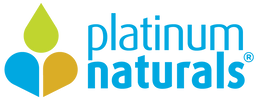Be strict about hand washing, and disinfect items like doorknobs, remote controls and phones daily. Also, staying physically active, getting plenty of rest and taking a daily multivitamin are good preventative measures.
Immune tonics
Herbal immune tonics may be used to prevent catching a cold or the flu. They act slowly, but have a prolonged effect compared to immune stimulants. Immune tonics have adaptogenic qualities, meaning they help to balance the body to adapt to the physical stresses of a cold or the flu. However, they must be taken prior to the start of cold and flu season. For best results, choose two or three tonics and take them for two to three months. Examples include ginseng root, reishi mushroom, Cordyceps sinensis, Rhodiola rosea and astragalus (also known as milkvetch root).
Immune stimulants
Immune stimulants are effective for treating short-term, acute infections by increasing immune activity. Start taking these herbs as soon as you think you’re getting sick as the duration of your cold or flu may be reduced. Examples include oregano, goldenseal, elderberry, garlic and echinacea1.
Vitamin boost
Eat foods rich in vitamins C and D to help keep your immune system functioning well. Fruits high in vitamin C include tangerines, oranges, mangos, kiwis, papayas and goji berries. Foods high in vitamin D include fish, milk, yogurt and eggs. A typical cold will last about 10 days. If you’re not feeling better, continue to be congested or have a sore throat, see a doctor or health care practitioner.
1. “The benefits of hand washing.”
Health Canada. May 30/14. Retrieved on June 19/15 from http://www.hc-sc.gc.ca/hl-vs/iyh-vsv/diseases-maladies/hands-mains-eng.php#how
2. Block, K.I. and Mead, M.N. (2003)
Immune system effects of echinacea, ginseng, and astragalus: a review. Integrative Cancer Therapies 2(3): 248-267. http://www.ncbi.nlm.nih.gov/pubmed/15035888
3. Ryu E, et al.
“Cordycepin is a novel chemical suppressor of Epstein-Barr virus replication.” Oncoscience. 2014 Dec; 1(12); Retrieved on June 19/15 from http://www.ncbi.nlm.nih.gov/pubmed/25621301
4. Panossian, A., Wikman, G. and Sarris, J. (2010)
Rosenroot (Rhodiola rosea): Traditional use, chemical composition, pharmacology and clinical efficacy. Phytomedicine 17: 481-493. http://www.ncbi.nlm.nih.gov/pubmed/20378318
6. Skrovankova, S., Misurcova, L. and Machu, L. (2012)
Antioxidant activity and protecting health effects of common medicinal plants. Adv Food Nutr Res 67: 75-139. http://www.ncbi.nlm.nih.gov/pubmed/23034115
7. Cecil, C.E., Davis, J.M., Cech, N.B. and Laster, S.M. (2011)
Inhibition of H1N1 influenza A virus growth and induction of inflammatory mediators by the isoquinoline alkaloid berberine and extracts of goldenseal (Hydrastis canadensis). Int Immunopharm 11: 1706-1714. http://www.ncbi.nlm.nih.gov/pubmed/21683808
8. Shi, S. and Klotz, U. (2012)
Drug interactions with herbal medicines. Clin Pharmacokinet 51(2): 77-104. http://www.ncbi.nlm.nih.gov/pubmed/22257149
9.“Overview of the immune system.”
See section on ‘Vitamin C.’ Linus Pauling Institute Micronutrient Information Center. Oregon State University. Retrieved on June 19/15 from http://lpi.oregonstate.edu/mic/micronutrients-health/immunity
10. Aranow Cynthia.
“Vitamin D and the immune system.” Journal of Investigative Medicine. Aug 2011; 59(6); 881-886. Retrieved on June 19/15 from http://www.ncbi.nlm.nih.gov/pmc/articles/PMC3166406/
11. “Foods highest in vitamin C.”
SelfNutritionData.com. Retrieved on June 19/15 from http://nutritiondata.self.com/foods-009101000000000000000-w.html
12. “Food sources of vitamin D.”
Dietitians of Canada. Retrieved on June 19/15 from http://www.dietitians.ca/Your-Health/Nutrition-A-Z/Vitamins/Food-Sources-of-Vitamin-D.aspx
13. “Common cold.”
National Heath Service. Retrieved on June 19/15 from http://www.nhs.uk/conditions/Cold-common/Pages/Introduction.aspx







